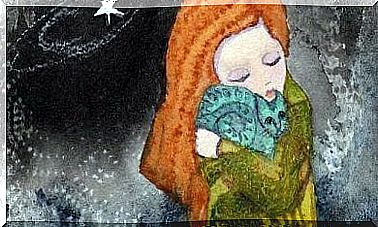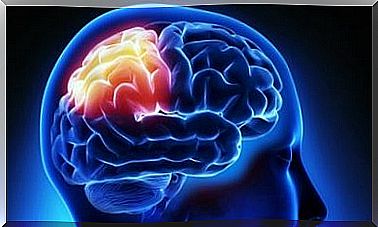How To Identify Negative Automatic Thoughts?

I recently found an image on social media that I loved. It was an old passport photo of a woman who had a sign on her face that said “don’t believe everything you think”… Wait a minute! What does this mean? Why should I doubt my own thoughts? Here is the crux of the matter. They have never taught us. At school they explained a lot of the outside world to us, but little or none of the inside.
If something goes through our heads, and it comes back, and it comes back … in the end it usually ends up acquiring some connotation of reality for us . The problem is that many times this has nothing real, so we generate unnecessary emotional discomfort. Fighting it intelligently involves learning to identify the negative automatic thoughts that appear. In this way, we can then question and change them … Learn to control your thoughts to regain your well-being!
What are negative automatic thoughts?
The reality is that our thoughts, that internal dialogue we have with ourselves, condition how we feel and influence how we act. Our assessment of the situation influences how we interpret it and makes us experience it in one way or another on an emotional level.
Therefore, it is necessary to learn to identify negative automatic thoughts. That is, those that do not adjust to the situation and cause emotions that are too intense, long-lasting and / or recurring in relation to what is really happening to us. These types of cognitions are related to others that I have already talked about in other articles and that influence emotional distress: irrational beliefs and cognitive biases.

Distorted (or negative automatic) thoughts are unique to each one, and the content varies from one subject to another. That is, they are specific to the person. In addition, they are discreet and spontaneous: they appear without our being aware of it and it is difficult to identify them as a threat when they first appear. Finally, we believe them without putting them on trial and we tend to see them as obligations (towards ourselves or towards others).
Types of negative automatic thoughts
Now that we know what they are, to learn to identify negative automatic thoughts we have to know the different forms they take. The reality is that we all generate them, to a greater or lesser extent. In addition, as I have already explained, we cannot control their start, so what we will work on is to question and change them.
But for this we have to locate them as soon as possible. It is not easy, but it is possible. The idea is to learn to balance what we think, to take perspective and doubt if things are really like that. That is, we must learn to be realistic. Go for it. The types of distorted thoughts that we usually have are:
- Magnification or minimization: giving excessive value to the negative aspects and downplaying the positive.
- Dichotomous thinking: classifying situations as “all or nothing”, “black or white”, “perfect” or “disastrous”, etc., instead of seeing that in real life there are more degrees between the extremes.
- Arbitrary inference: drawing negative conclusions without having proof of it or with evidence to the contrary.
- Overgeneralization: extract a general rule based on isolated incidents, applying it to situations different from the original one.
- Thought divination: thinking that others are going to react negatively towards us without having proof of it.
- Strict rules of behavior: feeling that ourselves or others are obliged to do certain things. As this does not actually happen later, it tends to generate a lot of discomfort (especially in our interpersonal relationships).
- Personalization: tendency to relate other people’s things to oneself, becoming involved in an excessive or inappropriate way.
- Emotional reasoning: believing that things are this way because one feels them that way.

Example to identify negative automatic thoughts
To understand the extent of the influence of these seemingly harmless thoughts, let’s look at an example. After a meeting, a colleague tells us: “hey, I liked how you presented at the meeting, although you seemed a bit nervous”. It may be that, faced with this situation, we think “oh my gosh, I’m the worst, they’re going to think I’m a disaster… I always do everything wrong! They sure don’t want me to talk more in meetings. “
Here we see a little of everything: magnification of the negative and minimization of the positive (we do not even notice that he liked how I have exposed), dichotomous thinking (“I always do everything wrong”, “I am the worst”, instead of seeing that in between there are more degrees), arbitrary inference (“they sure don’t want me to talk any more”), thought divination (“they’re going to think I’m a mess”), and so on.
It is not easy, but if we get involved in identifying the negative automatic thoughts that appear, as we have done in the example, we will witness the whole process: the one in which we make a mountain out of a grain of sand. This step is essential to learn to control our thoughts and, consequently, our emotions … For our well-being!









